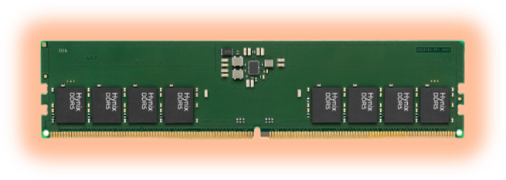E-Waste: Navigating Challenges and Opportunities in Communications Applications
The telecommunications industry is at a crossroads where design optimization, cost management, and environmental sustainability converge. With the increasing demand for reliable and high-performance telecommunications equipment, manufacturers face the challenge of designing systems that not only meet technical requirements but also align with budget constraints and growing environmental concerns. Memory components, like DRAM and Flash, are central to the performance and lifespan of telecommunications applications. Especially in long-life applications, cost-effective design strategies, including the use of durable memory components, can help mitigate electronic waste concerns while ensuring that telecommunications applications remain competitive and sustainable.
Design: Managing Total Cost of Ownership (TCO) Through Memory Longevity
Telecommunications equipment, from transceivers and switches to satellites and mobile communication devices, is highly dependent on memory for processing, storage, and operational stability. The choice of memory—whether DRAM, eMMC, Flash memory cards, or other variants—directly impacts not just the total cost of ownership (TCO) but also the lifecycle management and sustainability of these systems.
One of the key drivers in the design of telecommunications equipment is the need to minimize TCO. That is particularly true for applications where downtime translates directly into revenue loss or degraded service quality. Durable memory components reduce the frequency of unexpected failures, which can cause service interruptions and necessitate costly repairs. For example, selecting memory components proven to operate reliably under extreme conditions—such as those found in outdoor transceivers or satellite communication systems— lower maintenance costs, contributing to a lower TCO, although they may require a higher upfront cost. The longer an application is projected to last, the more important it becomes to reduce its lifecycle cost. Telecommunications systems are often deployed with the expectation of a 7- to 10-year operational life, especially in infrastructure-critical applications. By using memory components with a proven track record of long-term reliability, the need for mid-life upgrades or replacements can be reduced, thereby lowering lifecycle costs.
E-Waste: A Growing Concern for Telecommunications
The telecommunications industry is increasingly receiving backlash as a major source of electronic waste. The UN estimated its contribution was 4.6 billion kg of e-waste in 2022. Telecom is driven by the semiconductor industry’s speed of innovation and market demand for cutting-edge technology, leading to the frequent release of new products to meet market expectations. While essential for maintaining competitive advantage, this rapid cycle also contributes to the growing e-waste problem. As technological advancements necessitate the constant upgrading and replacement of telecom equipment, the volume of e-waste has surged. According to the Global E-Waste Monitor 2024, the amount of e-waste is increasing five times faster than recycling efforts can keep up.
Navigating Challenges and Finding Opportunities
While cost and performance are paramount, there is an increasing need for telecommunications equipment to be designed with sustainability in mind. The strategic use of durable memory components presents an opportunity to align economic and environmental goals. Memory components designed for durability do more than reduce maintenance costs—they also contribute to sustainability by extending the operational life of telecommunications equipment. For example, DRAM and Flash memory with extended endurance cycles and enhanced data retention capabilities can reduce the frequency of replacements. While it may not stop the end-user from wanting the latest, extending the life of telecom products is a crucial step towards more sustainability. A strategic approach to memory selection can influence the entire lifecycle, from design and deployment to end-of-life disposal.
Telecommunications equipment must be designed with a view toward the long-term operational needs of the industry. That means selecting memory components compatible with current technological requirements and also resilient enough to support future upgrades and expansions. For instance, choosing memory technologies that offer backward compatibility can enable seamless transitions during system upgrades, reducing the need for full-scale replacements and, thereby, minimizing e-waste. Effective lifecycle planning includes the use of durable and forward-compatible memory to deliver products that are designed for longevity and reuse.
Designing for Sustainability Without Compromising Performance
The telecommunications industry faces complex challenges balancing cost, performance, and sustainability. Manufacturers and designers can address these in part by focusing on the strategic selection of durable memory components. At SMARTsemi, we understand the critical role that memory components play in the telecommunications industry, not just in terms of performance but also in the broader context of cost management and sustainability, building our offering to deliver solutions that meet these critical needs. The use of high-durability memory enhances the reliability and longevity of telecommunications equipment but also plays a crucial role in reducing the industry's contribution to global electronic waste. As telecom moves forward, the integration of cost-effective design with sustainability principles will be essential in meeting both the operational demands and environmental responsibilities of modern telecommunications.
SMARTsemi is your supply chain partner for DRAM components, eMMC solutions, and SD/microSD Flash Memory Cards for long-life applications. With 20+ years of industry experience, we understand your challenges and have aligned our priorities with yours to simplify your memory chip supply chain for the long run. We know what you need before you need it. Get a jump start and request a sample today.







